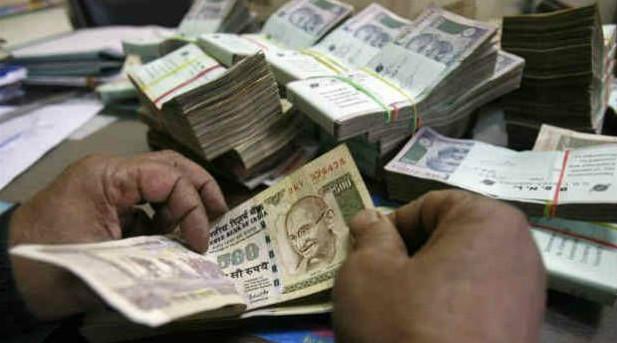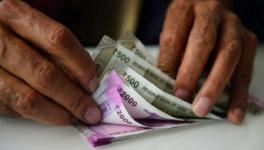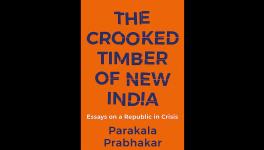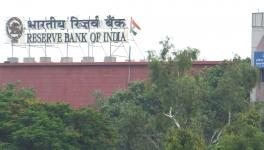Why is the Government Panicking on Further Deposits?

There appears to be panic within the government on people returning the demonetised Rs. 500 and Rs. 1,000 notes. Only this explains why it should come out with notification on deposits of Rs. 5,000 and above, and then reversing its decisions after strong public criticism. Calculations show that almost Rs. 14 lakh crore had come back to the banks by 9th December, and almost all Rs. 500 and Rs. 1,000 notes with the public would also have come back by now.
After the release of the latest Money Supply Data of the RBI, it would seem that practically all the old notes of Rupees 500 and Rupees 1000 denominations (Specified Banknotes or SBNs) had been deposited with banks by 9 December 2016 and less than a lakh crores worth was still in the hands of the public on that date. Most of this balance is also likely to have been deposited in the nearly two weeks since then. By our calculations, Rs. 14 lakh crore has already come back into the banking system. This could be the reason of the government’s anxiety to stop any further deposits, and show some nominal destruction of black money.
How the above conclusion is arrived at is explained below.
1) As per RBI data released on 21 December and 14 December, Currency with the Public as on 9 December 2016 was Rs. 7.81 lakh crores while Currency in Circulation was Rs. 9.81 lakh crores (the difference of Rs. 2 lakh crores being then cash reserves held by banks).
2) As per information given out by RBI on 13 December, value of valid notes issued to the public by banks between 10 November and 10 December 2016 was Rs. 4.61 lakh crores while older 500 and 1000 rupee notes of the value 12.44 lakh crores had been received by the RBI over the same period.
3) Value of notes of denominations less than Rs.500 held by the public on 8 November was approximately Rs. 2.4 lakh crores (14 per cent of total currency with the public).
2 and 3 give us that a figure of 7.01 lakh crores of valid currency being in the hands of the public between 8 November and 10 December (4.61 + 2.4). How much of this 7.01 lakh crores would have gone back to banks as deposits or been paid into government accounts during this period? If this amount was zero or close to it, then only about 0.8 lakh crores (7.81-7.01) could have been with the public in old notes of 500 and 1000 denominations on 9/10 December. Does this mean that most of the public's original holding of 500 and 1000 notes had been already deposited in banks by 9/10 December and the difference between this figure (Rs. 14 lakh crores) and the amount received by RBI (Rs. 12.44 lakh cores) was held by banks as part of their Rs. 2 lakh crores worth of cash reserves? Please do note that another 11 days have passed after 10 December and it may well be that all the old 500 and 1000 rupee notes are back with banks. Unfortunately, the RBI has not released any figures of such deposits for some time so we can never quite be sure.
A detailed calculation of the same is given below:
(From RBI data on Money Supply - RBI Release on 21 December 2016)
(Reported release of banknotes to the public by banks over their counters and through their ATMs from 10 November to 10 December 2016, that is up to one day beyond 9 November which was also a Saturday - RBI, Transcript of the Deputy Governors’ statement to the Media, 13 December 2016)
2. Estimation of Currency with Public on 8 November and its Composition:
We know that:
Currency in Circulation (CIC) = Currency with the Public (CWP) + Cash Reserves of Banks
Table: CWP and CIC from 30 September 2016 to 4 November 2016 (in lakh crores)
| CWP/CIC (%) | CIC | CWP | Date |
| 95.84 | 17.28 | 16.56 | 30-Sep |
| 17.56 | 07-Oct | ||
| 95.71 | 17.75 | 16.99 | 14-Oct |
| 17.59 | 21-Oct | ||
| 95.73 | 17.77 | 17.01 | 28-Oct |
| 17.97 | 04-Nov |
Source: RBI Weekly and Fortnightly Releases of Reserve Money and Money Supply data respectively
As can be seen in the table up to the last date before the demonetization announcement for which both sets of figures are available (28 October), CWP is normally nearly 96 per cent of the CIC. Taking this, and assuming that the situation on 8 November would have been close to what it was on 4 November, the CWP on 8 November should have been around 17.2 lakh crores. Since 86% of the currency in circulation was in the denominations of 500 and 1000 – the component of CWP in these denominations would have been around 14.8 lakh crores. The Minister for State for Finance had also announced in Parliament that the value of 500 and 1000 Rupees notes in circulation on 8 November was 15.44 lakh crores – 14.8 lakh crores would also be just under 96% of that. Thus, either way one looks at it 14.8 lakh crores is a safe estimate of the value of old 500 and 1000 rupee notes held by the public on 8 November. The balance 2.4 lakh crores of the total CWP on 8 November should therefore have been made up of currency in denominations less than Rupees 500.
3. The transcript of the RBI Deputy Governors’ statement to the media on 13 December said:
“Specified Bank Notes (SBNs) of ` 500 and `1000 returned to RBI and Currency Chests amounted to ` 12.44 lakh crore as of December 10, 2016.”
There is a difference of Rupees 1.56 lakh crores between this figure and the one arrived at in 1. However, the figure of 12.44 lakh crores presumably does not include the SBNs which were still in the hand of banks and part of their cash reserves. From the money supply and reserve money data for 9 November, we know that the CIC exceeded the CWP by Rupees 2 lakh crores on that date, which had to be thus the value of cash reserves of banks. It was possible therefore for the balance 1.56 lakh crores of SBNs to be in the hands of banks.
Get the latest reports & analysis with people's perspective on Protests, movements & deep analytical videos, discussions of the current affairs in your Telegram app. Subscribe to NewsClick's Telegram channel & get Real-Time updates on stories, as they get published on our website.
























